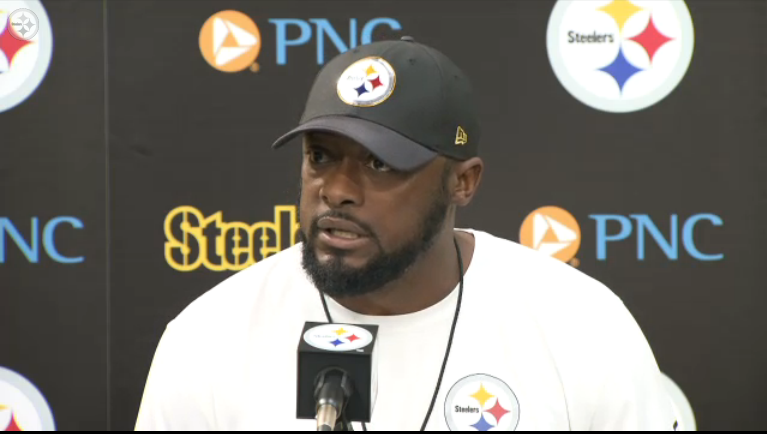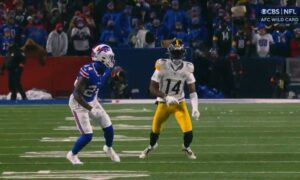If he had to do it all over again, Pittsburgh Steelers head coach Mike Tomlin wouldn’t change a thing with the way he managed the team’s final three timeouts in the Sunday loss to the Cincinnati Bengals at Heinz Field.
Immediately following that loss, Tomlin was asked about his decision late in that game to not use the team’s first of three available timeouts that were available after a first down run by Bengals running back Jeremy Hill that took place with 2:44 left on the clock from the Steelers 26 yard-line. Tomlin defended that decision by saying the 38 seconds the team lost by letting the clock run down to the two-minute warning were less important to him than having one timeout for his offense to use to potentially drive for a game-winning touchdown.
During his Tuesday press conference, Tomlin was again asked about his late-game handling of the clock and if he’d do the same thing again if given the opportunity.
“Yeah, I thought I was pretty clear in how I outlined that decision after the game,” said Tomlin. “I thought that having the ability to stop the clock was more important once we had the ball.”
Tomlin went on to talk about how important it was to him for his offense to have the one final timeout and how he felt it gave that unit a level of control as it relates to how the Bengals defense would try to defend the field.
“Often times it dictates the coverages that defense play,” said Tomlin. “They have to defend the middle of the field when you have the ability to stop the clock. If you don’t have the ability to stop the clock, they’re going to get in their cover-2 structure and rush their four men and really protect the sideline and that scenario was going to get increasingly more difficult if they got in that structure.
“I thought that by possessing that timeout it would give us an opportunity to at least have the ability to challenge the interior of the field and maybe dictate some of the coverages that they play and give us a better chance to navigate down the field We were comfortable with that and that’s the plan that we went with and if I had to do over, I’d do it again.”
Prior to that final drive beginning, kick returner Dri Archer decided not to return the kickoff following the Bengals final field goal as he chose instead to take a knee for a touchback. Tomlin was asked on Tuesday if Archer was told to take that course of action on the kickoff and he said that was indeed the case.
“No, I just wanted to give the ball to our offense,” said Tomlin. “Often times that play is another play for the offense. And we hadn’t done a great job in that game, at least in blocking [Cedric] Peerman. He had tackled us twice inside the 20.
“Dri did what we told him to do. If he brings that ball out, he probably gets around the 20 based on what we had seen and runs off about 4 or 5, or 6 seconds on the clock and I think that’s what was on the clock for the last ball that we snapped. So, we wanted to preserve those minutes and give those seconds to Ben [Roethlisberger] and that’s why we took the approach that we did.”
Curiously enough, in the Monday night game between the Carolina Panthers and the Indianapolis Colts, the latter was faced with a similar clock management situation with only two timeouts remaining and down three points with 2:27 remaining in regulation.
Colts head coach Chuck Pagano used the first of his two remaining timeouts following a Panthers two-yard run on first down and his final one was used following another short run on second down. That set up a 3rd and 3 play for the Panthers with 2:16 remaining and an incomplete pass on that play resulted in a punt on the ensuing fourth down.
With no timeouts remaining, the Colts offense got the ball back on their own 40-yard-line following the punt with 2:02 left on the clock and they proceeded to drive the field for a game-tying field goal as the clocked went to all zeros.








